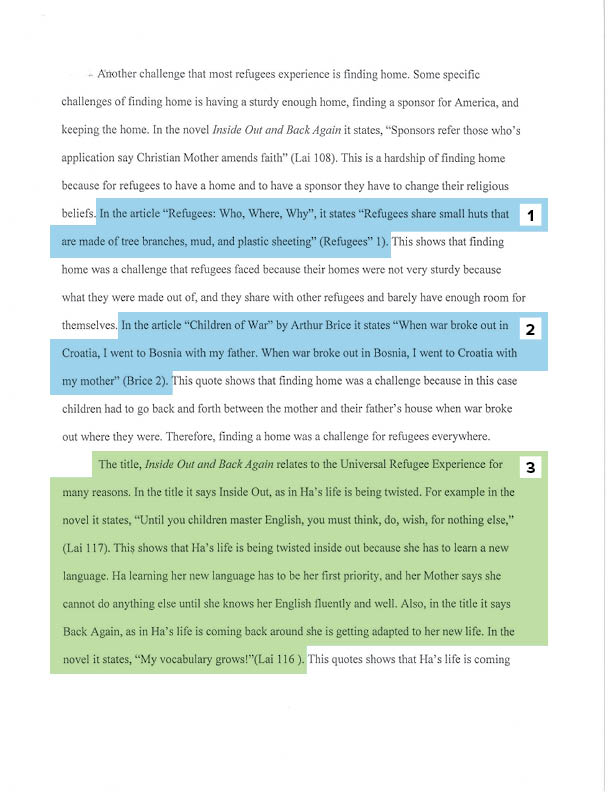All students should graduate from high school ready for college, careers, and citizenship.


Understanding
(Entire page)
In order to show an in-depth understanding, the student would need to include more evidence from the informational texts of refugees experiencing “inside out and back again.” The student appears to have a general understanding of RI.8.3.
Standard referenced:
RI.8.3: Analyze how a text makes connections among and distinctions between individuals, ideas, or events (e.g., through comparisons, analogies, or categories).
1. CCSS Alignment
When the student wrote, “In the article ‘Refugees: Who, Where, Why’, it states ‘Refugees share small huts that are made of tree branches, mud, and plastic sheeting’ (Refugees 1)” it shows that the student is proficient in citing textual evidence to show analysis of a text.
Standards referenced:
RL.8.1/RI.8.1: Cite the textual evidence that most strongly supports an analysis of what the text says explicitly as well as inferences drawn from the text.
2. CCSS Alignment
The student is proficient in analyzing how a text makes connections among and distinctions between individuals, ideas, or events (e.g., through comparisons, analogies, or categories). For example: “In the article ‘Children of War’ by Arthur Brice it states ‘When war broke out in Croatia, I went to Bosnia with my father. When war broke out in Bosnia, I went to Croatia with my mother’ (Brice 2).”
Standard referenced:
RL.8.3: Analyze how particular lines of dialogue or incidents in a story or drama propel the action, reveal aspects of a character, or provoke a decision.
3. Understanding
There is some analysis that shows the connection between the title of the book and the universal theme. The examples are only from the novel. To show more depth of understanding, the student would need to bring in more support from the informational texts.
Standards referenced:
RL.8.1/RI.8.1: Cite the textual evidence that most strongly supports an analysis of what the text says explicitly as well as inferences drawn from the text.
